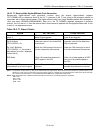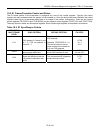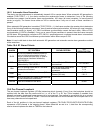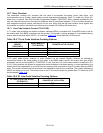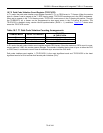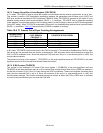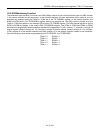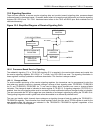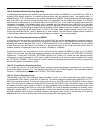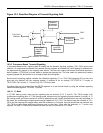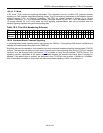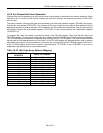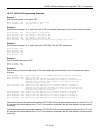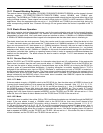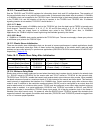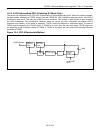
DS33R11 Ethernet Mapper with Integrated T1/E1/J1 Transceiver
83 of 344
10.9.2 Hardware-Based Receive Signaling
In hardware-based signaling the signaling data can be obtained from the RSERO pin or the RSIG pin. RSIG is a
signaling PCM stream output on a channel-by-channel basis from the signaling buffer. The signaling data, T1
robbed bit or E1 TS16, is still present in the original data stream at RSERO. The signaling buffer provides signaling
data to the RSIG pin and also allows signaling data to be reinserted into the original data stream in a different
alignment that is determined by a multiframe signal from the RSYNC pin. In this mode, the receive elastic store can
be enabled or disabled. If the receive elastic store is enabled, then the backplane clock (RSYSCLK) can be either
1.544MHz or 2.048MHz. In the ESF framing mode, the ABCD signaling bits are output on RSIG in the lower nibble
of each channel. The RSIG data is updated once a multiframe (3ms) unless a freeze is in effect. In the D4 framing
mode, the AB signaling bits are output twice on RSIG in the lower nibble of each channel. Hence, bits 5 and 6
contain the same data as bits 7 and 8, respectively, in each channel. The RSIG data is updated once a multiframe
(1.5ms) unless a freeze is in effect. See the timing diagrams in Section
12 for some examples.
10.9.2.1 Receive Signaling Reinsertion at RSERO
In this mode, the user provides a multiframe sync at the RSYNC pin and the signaling data is reinserted based on
this alignment. In T1 mode, this results in two copies of the signaling data in the RSERO data stream, the original
signaling data and the realigned data. This is of little consequence in voice channels. Reinsertion can be avoided
in data channels since this feature is activated on a per-channel basis. In this mode, the elastic store must be
enabled; however, the backplane clock can be either 1.544MHz or 2.048MHz.
Signaling reinsertion can be enabled on a per-channel basis by setting the RSRCS bit high in the TR.PCPR
register. The channels that will have signaling reinserted are selected by writing to the TR.PCDR1–TR.PCDR3
registers for T1 mode and TR.PCDR1–TR.PCDR4 registers for E1 mode. In E1 mode, the user generally selects
all channels or none for reinsertion. In E1 mode, signaling reinsertion on all channels can be enabled with a single
bit, TR.SIGCR.7 (GRSRE). This bit allows the user to reinsert all signaling channels without having to program all
channels through the per-channel function.
10.9.2.2 Force Receive Signaling All Ones
In T1 mode, the user can, on a per-channel basis, force the robbed-bit signaling bit positions to a 1 by using the
per-channel register (Section
10.2). The user sets the BTCS bit in the TR.PCPR register. The channels that will be
forced to 1 are selected by writing to the TR.PCDR1–TR.PCDR3 registers.
10.9.2.3 Receive Signaling Freeze
The signaling data in the four multiframe signaling buffers is frozen in a known good state upon either a loss of
synchronization (OOF event), carrier loss, or frame slip. This action meets the requirements of BellCore TR–TSY–
000170 for signaling freezing. To allow this freeze action to occur, the RFE control bit (TR.SIGCR.4) should be set
high. The user can force a freeze by setting the RFF control bit (TR.SIGCR.3) high. The RSIGF output pin provides
a hardware indication that a freeze is in effect. The four-multiframe buffer provides a three-multiframe delay in the
signaling bits provided at the RSIG pin (and at the RSERO pin if receive signaling reinsertion is enabled). When
freezing is enabled (RFE = 1), the signaling data is held in the last-known good state until the corrupting error
condition subsides. When the error condition subsides, the signaling data is held in the old state for at least an
additional 9ms (or 4.5ms in D4 framing mode) before updating with new signaling data.



